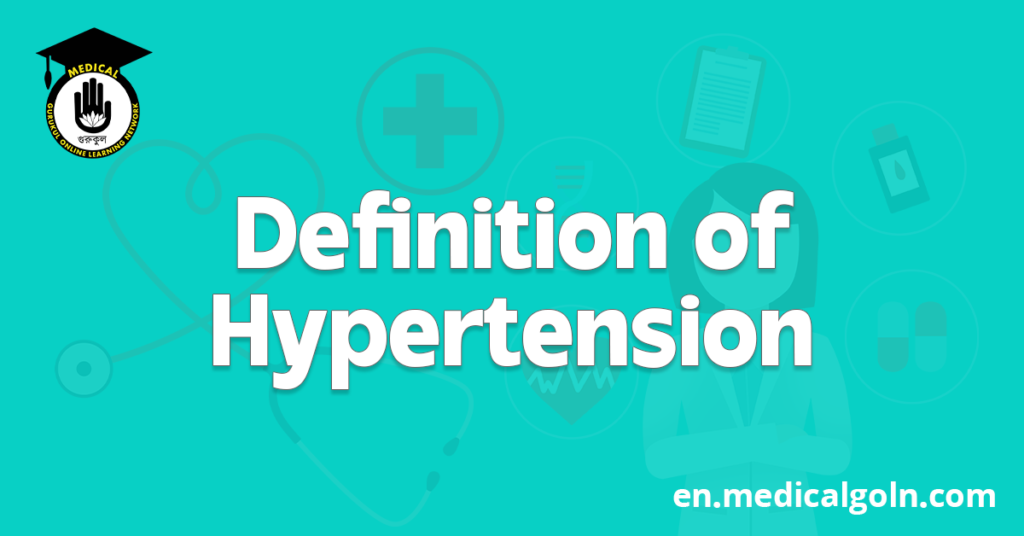Today is our topic of discussion Definition of Hypertension
Definition of Hypertension
The rise in aging population and urbanization are accompanied by an increase in non-communicable diseases along with mental health disorders. Non-communicable diseases of public health importance are cardio vascular disease, diabetes mellitus, cancer, chronic renal disease, chronic respiratory illness and mental health problems. Other conditions like injuries & road traffic injuries, violence against women are on the rise.
Definition:
Hypertension is a medical condition in which an individual have persistently higher than normal blood pressure in respect of age and sex of the individual.
Normal level of BP: For a normal healthy young adult, systolic 130 mm of Hg and diastolic pressure from 60 to 90 mm of Hg.
Types:
1. Essential (or primary) hypertension – Cause is unknown (>95% cases).
2. Secondary hypertension – <5% cases; secondary to other disease.
Causes of secondary hypertension:
1.Atherosclerosis
2.Autoimmune disorders
3.Chronic kidney disease
4.Coarctation of the aorta
5.Diabetes mellitus
6.Endocrine disorders – Pheochromocytoma,
Cushing syndrome**, Hyperaldosteronism
7.Renal artery stenosis
Risk factors for hypertension:
Non-modifiable risk factors:
1. Age
2. Genetic factors and race
3. Family history
Modifiable risk factors:
1. High intake of salt
2. Obesity
3. Smoking
4. High blood cholesterol
5. Environmental & mental stress
6. Alcohol use
7. Lack of physical activity
8. High intake of saturated fat
9. Drug: OCP, corticosteroids, NSAID
History relevant to hypertension:
1. Duration of hypertension.
2. Family history of hypertension and cardiovascular disease.
3. Dietary, psychosocial and drug history (OCP, steroids etc.)
4. Risk factors: Weight gain, dyslipidemia, smoking, diabetes, physical inactivity.
5. H/o of renal disease, change in appearance, spells of sweating and palpitations.
6. H/o TIA, stroke, angina, MI, congestive heart failure.
7. Co-morbidities.
S/S of hypertension:
1. Headache
2. Nausea and vomiting
3. Shortness of breath and fatigue
4. Blurred vision
5. Chest pain 6. Difficulty in speech and facial palsy
7. Weakness in one side of the body or limb
8. Vertigo, dizziness, confusion, somnolence
Investigation:
Blood:
a. Lipid profiles
b. Serum creatinine or blood urea
2. X-ray chest P/A view – cardiomegally
3. ECG – Left ventricular hypertrophy, ischaemia
4. Urine R/E- Protein, glucose and RBC.
5. USG of KUB nienalised to inomis
6. Echocardiogram
7. Coronary angiogram
Fig: X-ray showing cardiomegally due to hypertension
See also :

